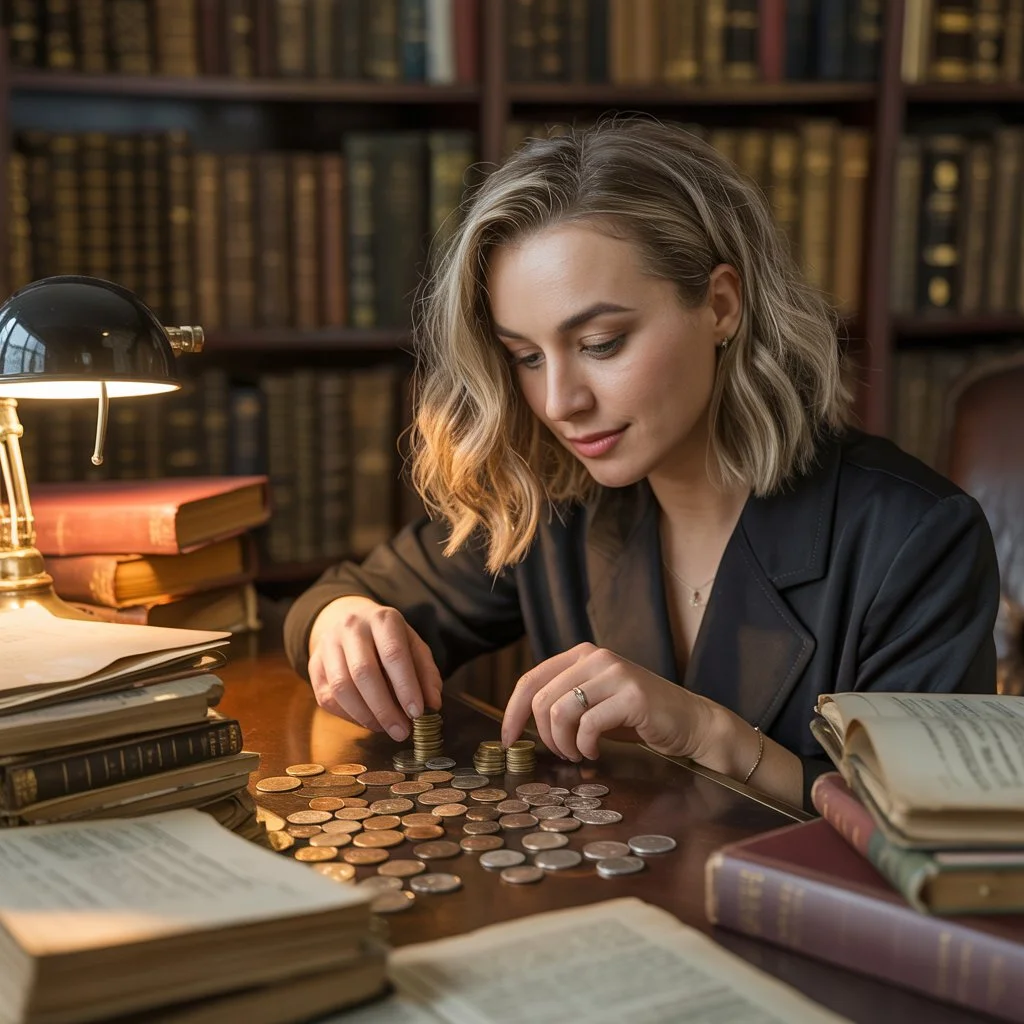
Helen Throne
About The Author
Helen Throne, is a 29-year-old woman who got her master’s degree as a specialist in world history. In college, she often went on digs to find old items. She knows how to look after old things so they don’t break.
Helen often organizes exhibitions of ancient coins and everyday objects from the past. After these exhibitions, she gives lectures, sharing tips on how to make your own coin collection valuable.
But for people from other countries and cities, it is possible to follow Helen’s content through social networks
Connect with Helen:



Your Guide to Valuable Coins
Did you know that in 2024, a teenager in Virginia bought groceries with a penny from 1969? It looked like a regular penny, but this one was special. Later, she sold it for $24,000
Most coins are only worth the number printed on them. But some everyday coins can be worth much, much more. This happens because of small mistakes, special marks from where they were made, and the material they are made from.
We will start with pennies and go all the way up to dollar coins. Learning how to tell if a coin is worth money involves looking for details. There will be coins from the U.S. and other countries. Additionally, you will see how to figure out if a coin is valuable.
Top 10 Valuable Coins
There are many rare US coins worth money that collectors seek out for their collections
| Year/Mint | Error Type | Value Range |
| 1969-S | Doubled Die Obverse | $25,000 – $100,000+ |
| 2004-D | Extra Leaf Wisconsin Quarter | $200 – $2,000+ |
| 1794 | Flowing Hair Dollar (Key Date) | $500,000 – $10,000,000+ |
| 1982 | No Mint Mark (Dime) | $50 – $300+ |
| 1999 | Delaware “Spitting Horse” Quarter | $50 – $300+ |
| 1976-S | Silver Proof Quarter | $5 – $50+ |
| Canadian 1911 | Silver Dollar (Pattern) | $1,000,000+ |
| 1955 | Doubled Die Penny | $1,000 – $5,000+ |
| 2020-W | Bat Quarter (Special Mint Mark) | $20 – $100+ |
| 1974-D | Doubled Die Penny | $50 – $500+ |
Coins worth money list may vary depending on the coin’s condition, market demand, and other factors
1969-S Doubled Die Penny
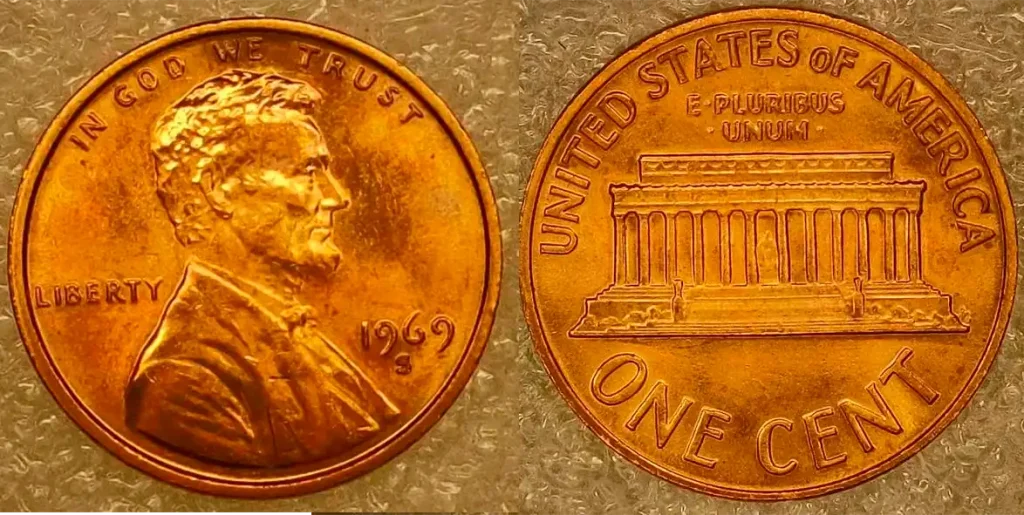
This coin comes from a time when the U.S. Mint was making a lot of coins. The doubled die error happened because of a small mistake in the minting process. The 1969 Penny is often marked as what coin is worth the most.
- Composition: 95% copper and 5% zinc.
- Mintage: Over 4 billion 1969-S pennies were made. However, only a tiny number of these had the doubled die error. The exact number of error coins found is unknown.
2004-D Wisconsin Extra Leaf Quarter
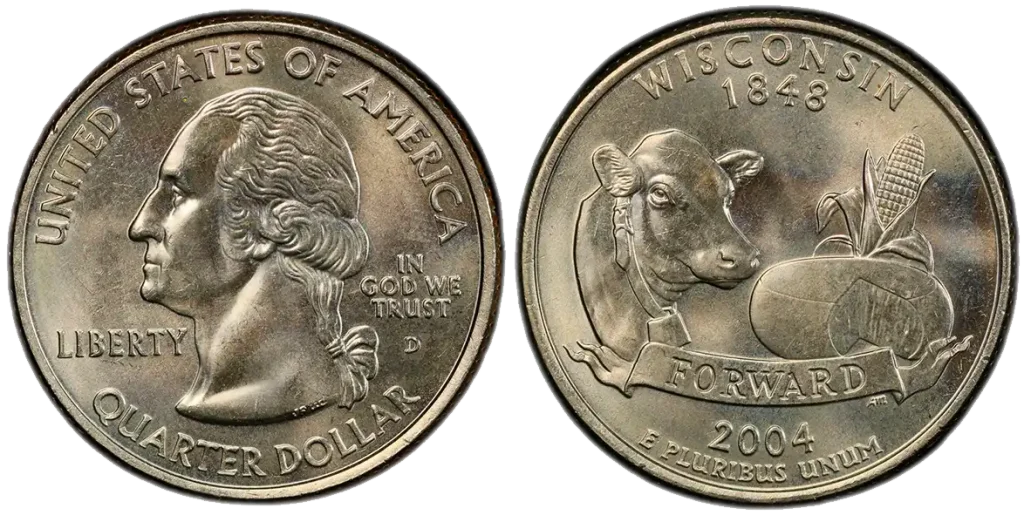
This coin is part of the 50 State Quarters Program, which ran from 1999 to 2008. Each state had its own special design.
- Composition: 91.67% copper and 8.33% nickel.
- Mintage: 226,800,000
1794 Flowing Hair Dollar
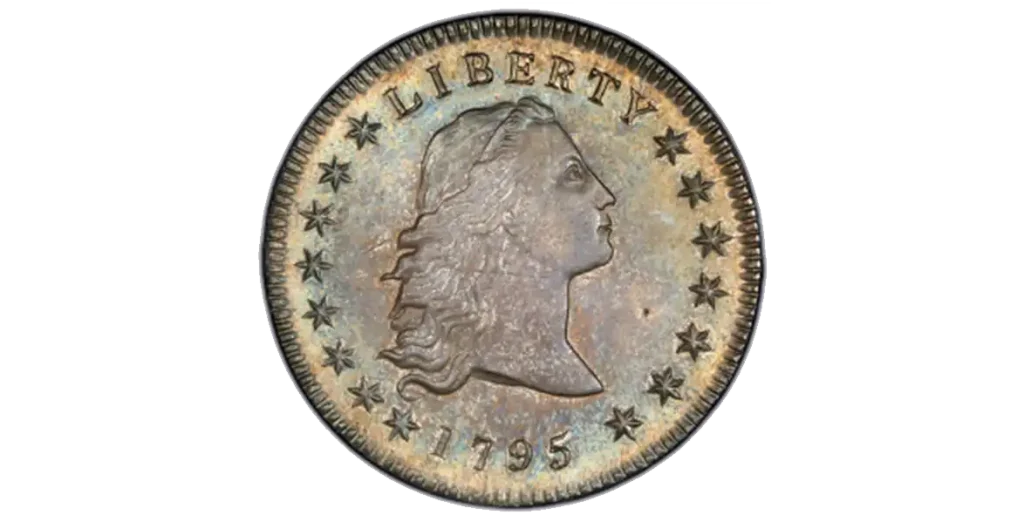
This coin represents the very beginning of the U.S. dollar system. It was minted just a few years after the U.S. Mint was established. Check online to see what coins are worth money today in the current market.
- Composition: 89.24% silver and 10.76% copper.
- Mintage: Only about 1,758 of these dollars were originally made in 1794. Many of them did not survive or were melted down.
1982 No Mint Mark Dime
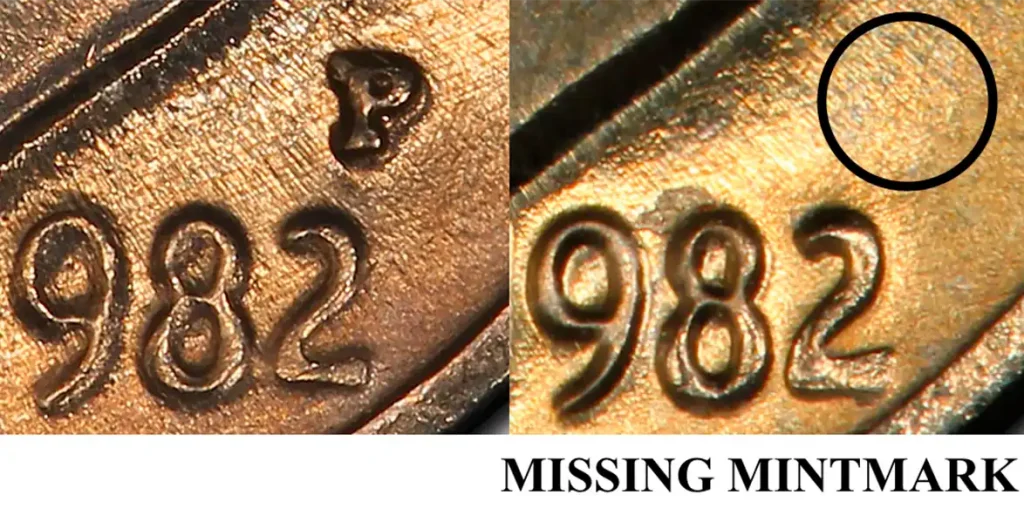
In 1982, the Philadelphia Mint usually put a “P” mint mark on its dimes. This error is usual one because it happened on a large number of coins.
- Composition: 91.67% copper and 8.33% nickel.
- Mintage: 519,475,000
1999 Delaware “Spitting Horse” Quarter
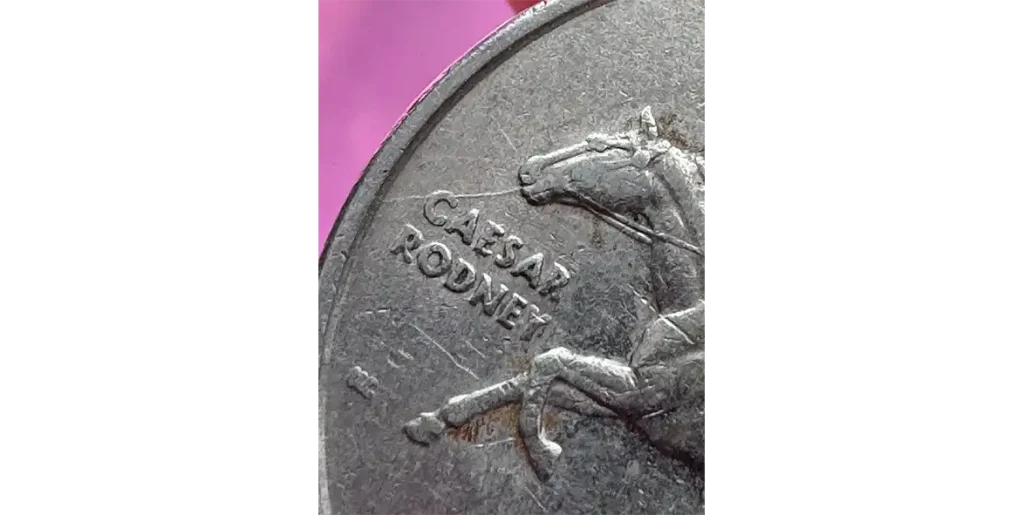
This quarter was the first in the 50 State Quarters Program. Die cracks are common errors, but this one created a memorable “spitting” effect.
- Composition: 91.67% copper and 8.33% nickel.
- Mintage: Over 774 million 1999 Delaware quarters were made. The number of “Spitting Horse” error coins is not precisely known but is a small fraction of the total mintage.
1976-S Silver Proof Bicentennial Quarter
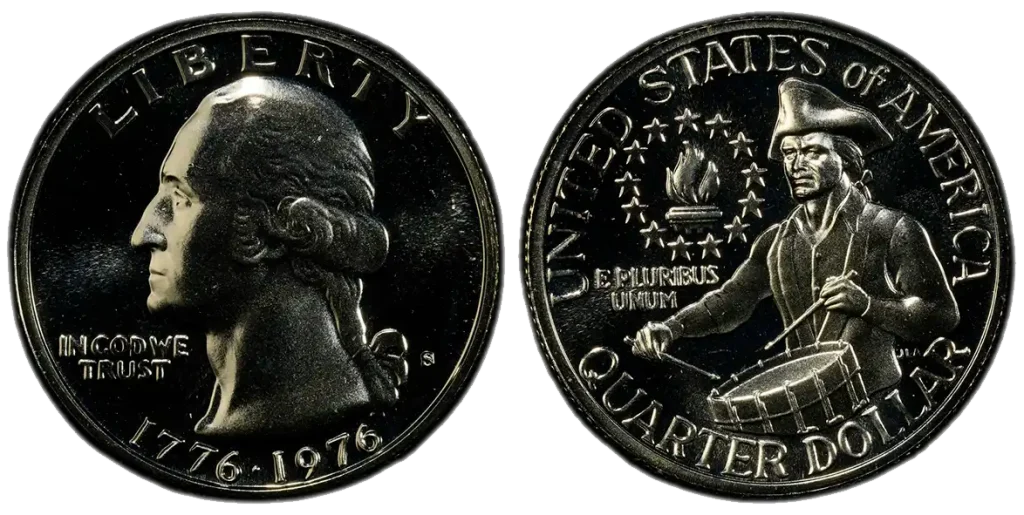
The U.S. Mint released special Bicentennial designs for the quarter, half dollar, and dollar from 1975 into 1976. They were minted in both regular copper-nickel and a special 40% silver composition for collectors.
- Composition: 40% silver and 60% copper
- Mintage: 4,000,000
Canadian 1911 Silver Dollar
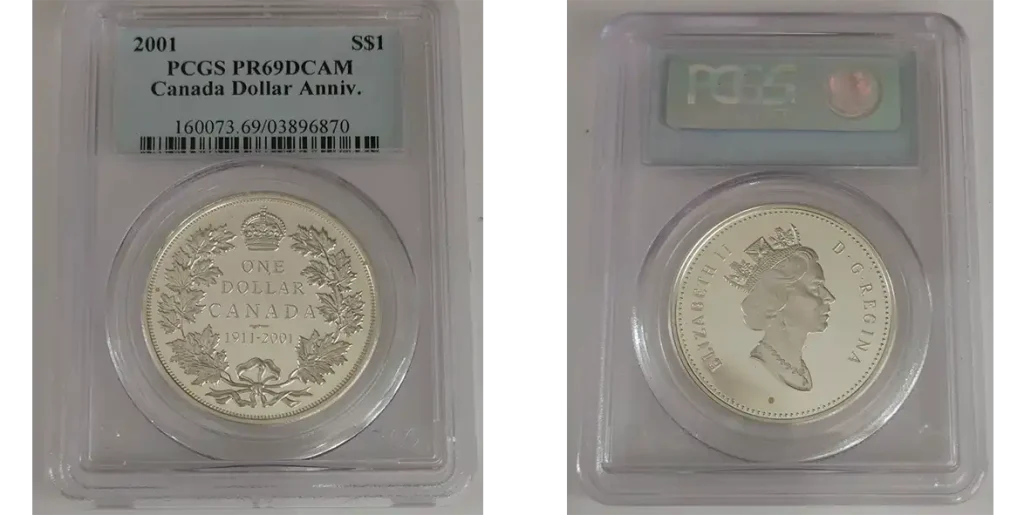
The 1911 dollar was intended to be the first Canadian silver dollar. However, only a few test strikes were made before the plans changed.
- Composition: 80% silver and 20% copper.
- Mintage: Numismatists know what dollar coins are worth money due to low production. Only three 1911 Canadian silver dollars are known to exist: two in silver and one in bronze.
1955 Doubled Die Penny
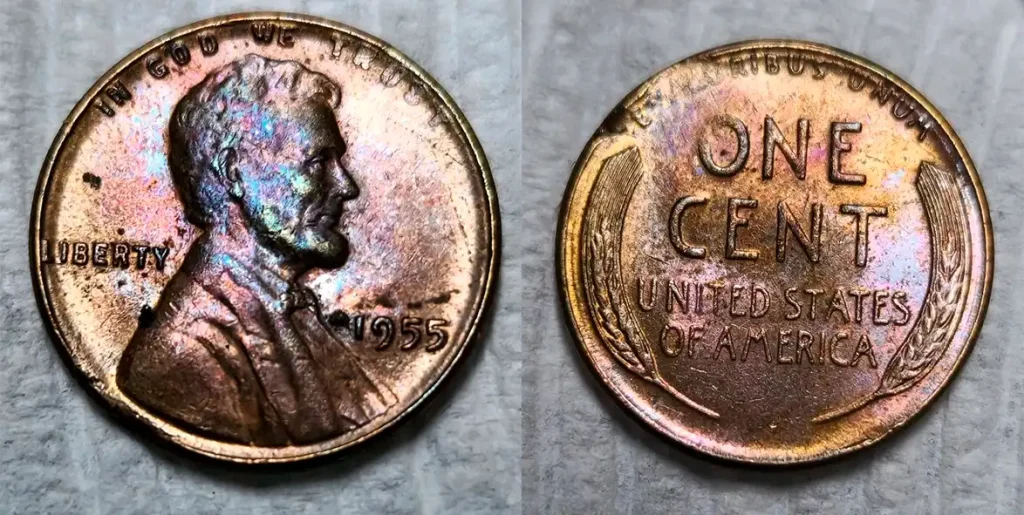
This error was quite obvious, and many people found these coins in circulation, which helped them become famous in the coin collecting world.
- Composition: 95% copper and 5% zinc.
- Mintage: Over 330 million 1955 pennies were made. It’s estimated that between 20,000 and 25,000 of them had the doubled die error.
2020-W Bat Quarter
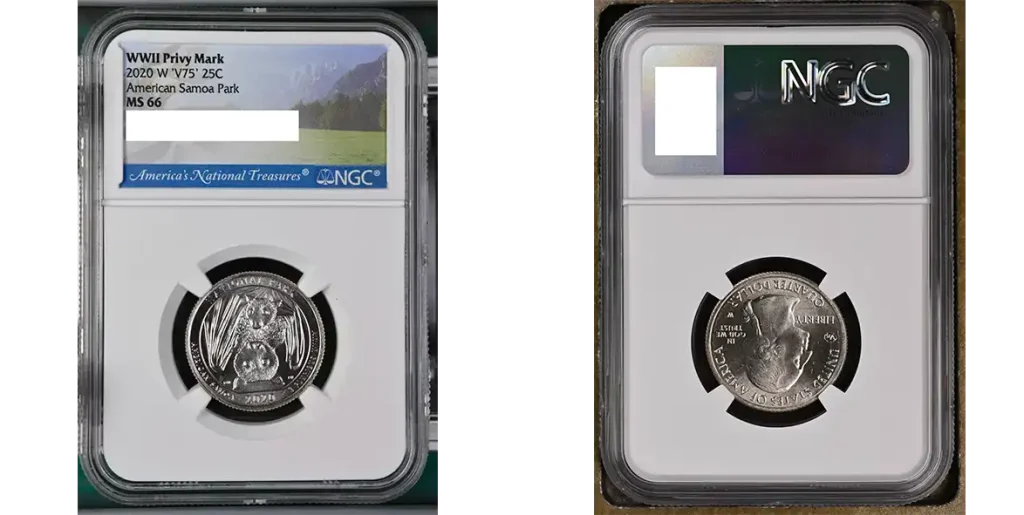
The U.S. Mint launched the “West Point Mint Mark” program for circulating quarters in 2019 to spark interest in coin collecting. The 2020 designs were part of this series.
- Composition: 91.67% copper and 8.33% nickel.
- Mintage: 2 million 2020-W American Samoa “Bat” quarters were minted.
1974-D Doubled Die Penny
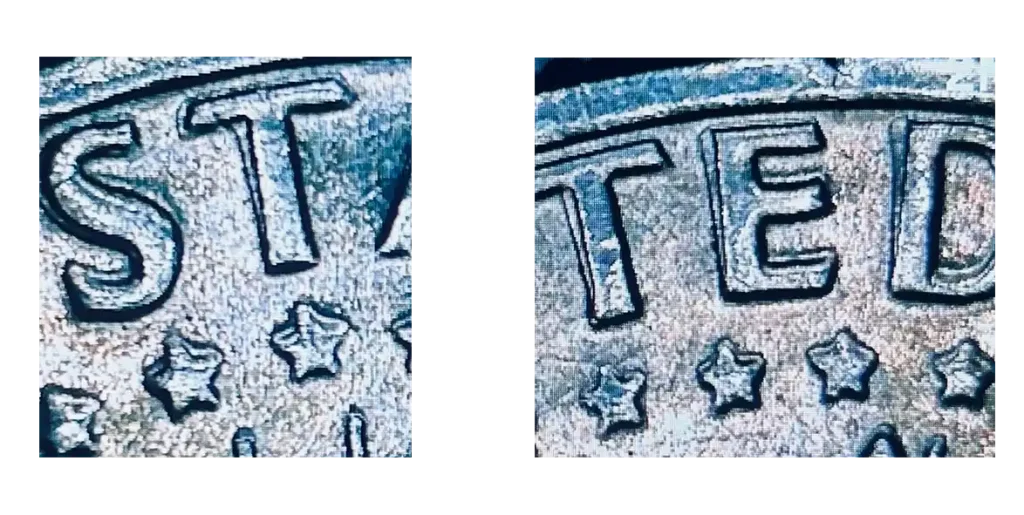
Certain error coins worth a lot of money can be hidden in everyday change. Doubled die errors can happen at different times due to issues in the die-making process. This 1974-D example is a version for penny collectors.
- Composition: 95% copper and 5% zinc.
- Mintage: Over 4.2 billion 1974-D pennies were made. The exact number of doubled die error coins is small and unknown.
Key Identification Factors
- Mint mark. Have you ever looked closely at a coin? There’s often a small letter on it. This letter is called a mint mark. It tells you where the coin was made. Think of these mint marks as “multipliers” – they can make a coin worth a lot more.
Here are some of them:
- S for San Francisco
- CC for Carson City
- W for West Point
Coins with these letters are often rarer and more valuable.
People are always curious what coins are worth a lot of money and why. For example, look at the 1964-D quarter. The “D” stands for Denver, another mint location. A regular 1964 quarter might not be worth much more than 25 cents. But if a 1964-D quarter is in perfect condition (we call this “MS68”), its value can go up by 400%. That “D” mint mark boosts the price significantly. So, a tiny letter can mean a big difference in value.
- Error coin bonuses. This means the coin has a mistake from when it was made.
Here are some of them:
- Doubled dies: Sometimes, the machine that stamps the coin hits it twice, making the design look blurry or doubled. A famous example is the 1955 Lincoln penny, where some of the letters look clearly doubled.
- Off-center strikes: This happens when the coin blank isn’t perfectly in the middle when it’s stamped. Part of the design might be missing, or it might look like the coin shifted.
- Clipped planchets: Imagine the round piece of metal that becomes a coin. Sometimes, it’s not perfectly round. A small piece might be missing from the edge. This is a clipped planchet.
For instance, the 2004 Wisconsin quarter. Some of these quarters have an “extra leaf” on the cornstalk design. If you find one of these, it can add about $1,500 to its value. Nowadays it is very easy to check the piece through the rare coins worth money chart to identify a valuable piece.
- Metal Content Matters
Here are several important details to know:
- Look closely at dimes and quarters made before 1965. These old coins are not like the ones we use today. They are made of 90% silver. Because of this, even if they look like a normal 10-cent or 25-cent, their metal value is much higher.
Today, one of these silver dimes might be worth around $2.50 just for its silver, and a quarter could be worth about $6. This amount changes because the price of silver goes up and down. This is called its “melt value” – what the metal itself is worth if you melted the coin. When specialists talk about “ASW” (Actual Silver Weight), it simply means how much real silver is in the coin.
- Talking about the 1943 copper penny. During World War II, pennies were supposed to be made from steel because copper was needed for the war. But a very small number of pennies were accidentally made from copper in 1943. These rare pennies can be worth over $100,000.
But be careful, because most pennies from 1943 are made of zinc-coated steel, which looks different and is very common. You can tell the difference if a magnet sticks to a 1943 penny – if it does, it’s the common steel one, not the rare copper one. Learning which coins are worth money helps you identify valuable pieces.
US Coin Spotlight
What makes a Wheat penny valuable? Some of the biggest money comes from mint errors, not just rare dates.
Lincoln Pennies (1909-Today)
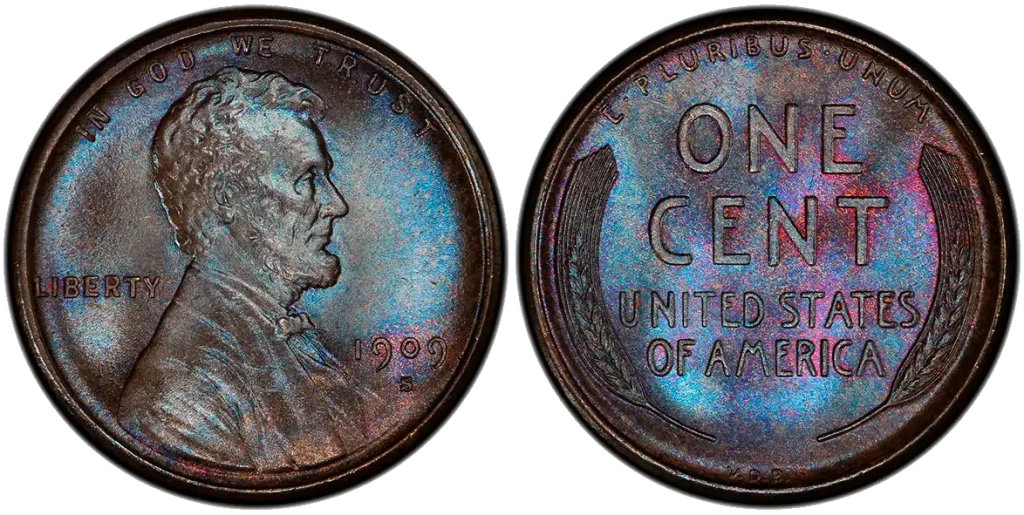
The penny is a coin we see every day. But some Lincoln pennies are very special. Look out for these “key dates” or coins with mistakes.
| Lincoln Pennies | Special Features | Value |
| 1909-S VDB | Early, rare date with “VDB” initials | $600+ |
| 1914-D | A rare date, especially if it’s in good condition | $200 – $5,000+ |
| 1922 No D | Missing the “D” mint mark by mistake | $500 – $10,000+ |
| 1931-S | Another low-mint date, hard to find | $100 – $1,000+ |
| 1943 Bronze | Made of bronze by mistake (should be steel) | $100,000+ |
| 1955 Doubled Die Obverse (DDO) | The words and numbers look blurry or doubled | $1,000+ |
| 1969-S Doubled Die | Date and lettering clearly doubled; very rare | $24,000 – $50,000 |
Coins that are worth money may vary depending on the condition, market demand, and other factors
Washington Quarters (1932-Today)
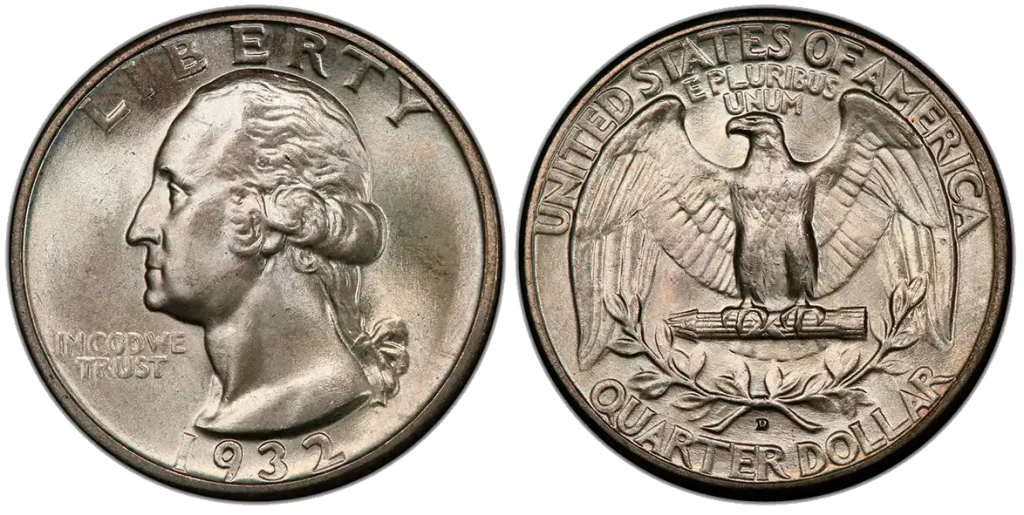
Quarters are also very common. But some of them are worth much more than 25 cents.
| Washington Quarters | Special Features | Value |
| Silver Quarters (1932-1964) | Made of 90% silver, so they are worth more than 25 cents just for the metal. Look for coins without a “P”, “D”, or “S” mark below the eagle, or with an “S” or “D” if from 1932. | Melt value + |
| 1932-D | A key date from 1932, very rare, especially in good shape | $525 – $30,000 |
| 1932-S | Another rare date from 1932, also highly sought after | $500 – $20,000+ |
| 1937 Doubled Die Obverse | Strong doubling on the words “IN GOD WE TRUST” | $100 – $2,000+ |
| 1942-D Doubled Die Obverse | Doubling on “LIBERTY” and “IN GOD WE TRUST” | $50 – $1,000+ |
| 1999 Spitting Horse | A small mark on the horse’s mouth looks like spitting | $50 – $500+ |
| 2004-D Wisconsin Extra Leaf | An extra leaf on the ear of corn; comes in “high” and “low” varieties | $50 – $300+ |
| 2005 Minnesota Doubled Dies | Extra trees on the design of the state of Minnesota | $20 – $200+ |
Old coins worth money is approximate and may vary depending on the condition, market demand, and other factors
Dollar Coins (1794-Today)
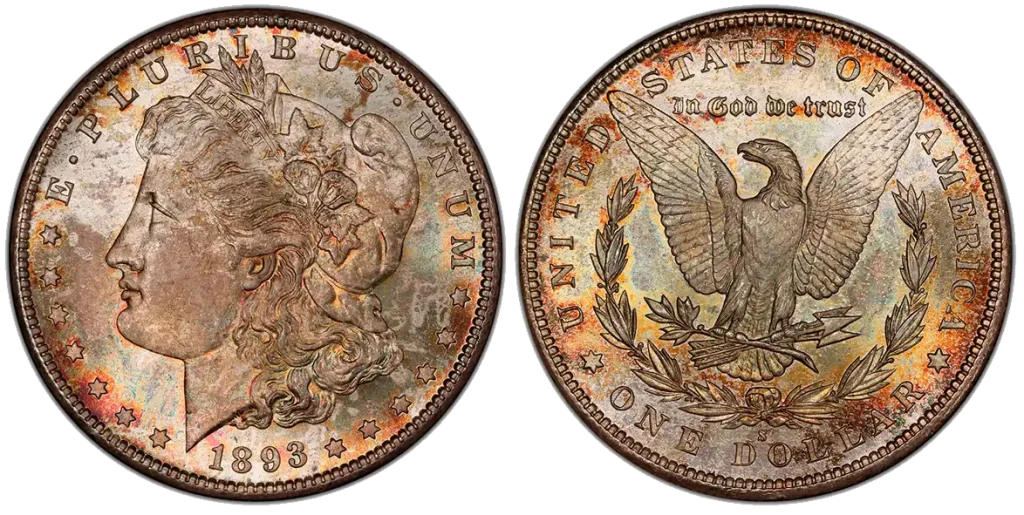
People often wonder, “are dollar coins worth anything” more than their face value. Dollar coins might not be in your pocket as often, but some of them are truly valuable.
| Morgan Dollar Coins | Special Features | Value |
| Morgan Dollars (1878-1921) | Many dates are common ($30-$50). But some are very rare. Look for coins from Carson City (“CC” mint mark) or certain dates and mint marks. | $30 – $50 (common) |
| 1878-CC (Morgan) | Early Carson City dollar, very collectible | $100 – $10,000+ |
| 1889-CC (Morgan) | A very rare date for Carson City, high value | $2,000 – $100,000+ |
| 1893-S (Morgan) | This specific date is very rare and highly desired by collectors. | $1,000 – $550,000 |
| 1895 (Morgan) (Proof) | No regular strike was made this year; only rare proof coins exist | $30,000 – $100,000+ |
| 2000-P “Cheerios” Sacagawea | Special promotion coin with clearer feather details on the eagle’s tail | $250 – $5,000 |
| 2000-P “Wounded Eagle” Sacagawea | A die error creates a raised line across the eagle’s belly | $50 – $200+ |
Dollar coins worth money is approximate and may vary depending on the condition, market demand, and other factors
Global Rarities
The Canadian 1911 Dollar: A True Rarity
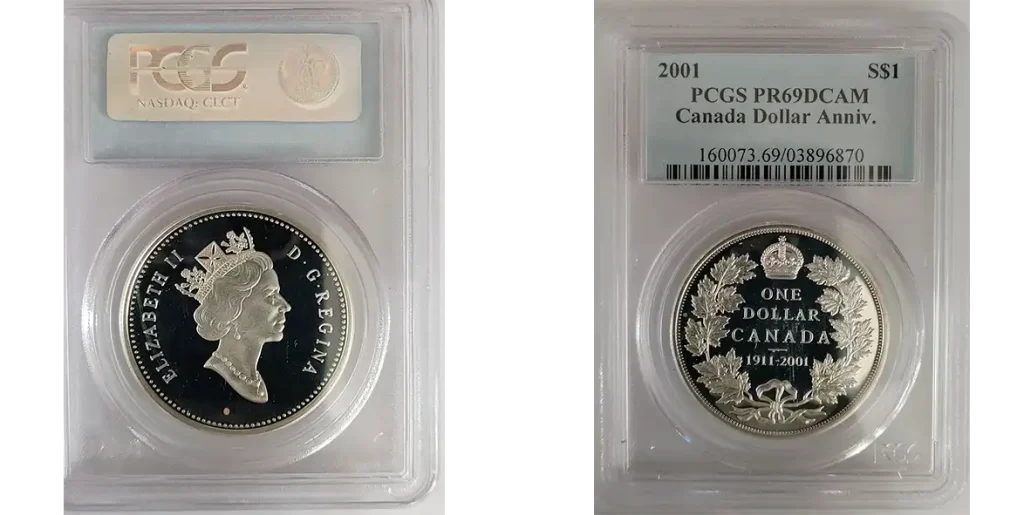
| 1911 Canadian Dollars | Special Features | Value |
| “Specimen” Silver Dollar | This coin is unique and is held by the Bank of Canada Museum. It is a proof coin, meaning it was made perfectly for display. | Considered priceless, not for sale. |
| “Pattern” Silver Dollar (First Private) | One of two “pattern” coins (test coins) made. This one was once part of a famous collection and is owned privately. | $1 Million – $2 Million |
| “Pattern” Silver Dollar (Second Private) | The other “pattern” coin, also in private hands. | $1 Million – $2 Million |
Foreign coins worth money is approximate and may vary depending on the condition, market demand, and other factors
The British 1933 Penny: A Royal Secret
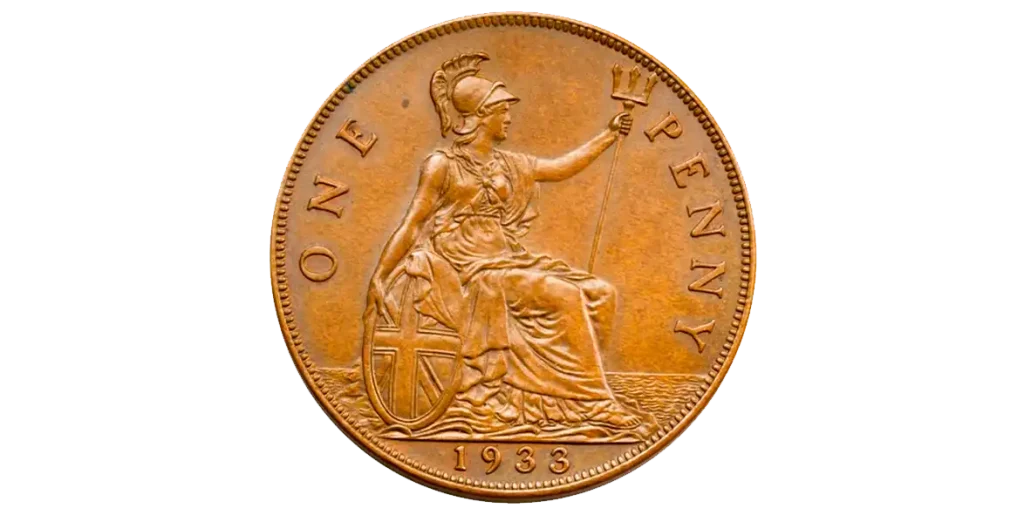
Many factors determine how much are coins worth, like their condition and mintage numbers. But a lot of them are special by their history.
| 1933 British Pennies | Special Features | Value |
| London Mint Proofs | These were special presentation coins, made perfectly for official purposes. One is in the British Museum. | $120,000+ (for private sales) |
| Royal Mint Proofs | Made at the Royal Mint in London. One was given to the University of London, and the other to the British Museum. | Priceless, generally not sold. |
| “Pattern” Penny | A special test coin with a unique design. This one is also in a private collection. | Can command high values |
Important Note: It’s very difficult and sometimes illegal to own one of these without the right papers. This is because they were not meant for public use and are considered as national treasures. How much is a dollar coin worth can vary, from its face value of $1 to thousands of dollars
The Australian 1930 Penny: A Depression-Era Gem
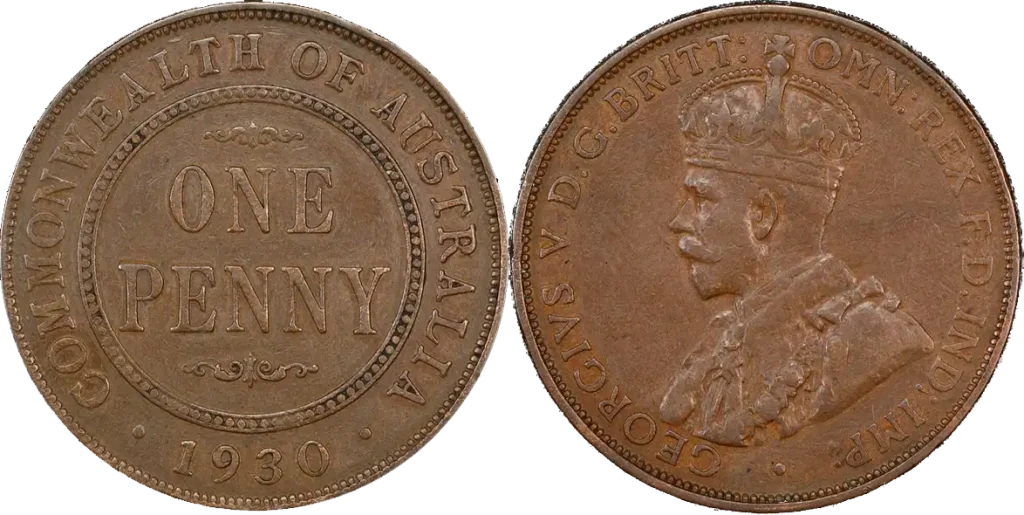
Some ancient artifacts include coins that are worth a lot of money because of their history. This penny is a true gem for collectors from Australia and beyond, especially in a great shape
| 1930 Australian Pennies | Special Features | Value |
| Standard Circulation Pennies | Due to a very small mintage (only about 1,500 coins were made), almost all 1930 pennies are considered rare. They were accidentally produced using dies from 1929. | Starts at a few thousand dollars, rising significantly with condition. |
| About Uncirculated Condition | Coins that show very little wear and still have much of their original shine are extremely valuable. The less wear, the higher the price. | $35,000+ |
| Uncirculated Condition | These are the rarest and most valuable, as they show no signs of ever being used in daily transactions. Only a handful exist in this perfect state. | Can reach over $100,000 |
Coin worth money is approximate and may vary depending on the condition, market demand, and other factors
Valuation Strategies
Grading Essentials
The condition is called its “grade.” This grade tells us how well the coin has been kept and how much wear it has. A higher grade often means a much higher price
- The Grading Scale: Experts use a special scale from P-1 (Poor), meaning the coin is very worn, all the way to MS-70 (Mint State 70), which means the coin is perfect, just like it was made, with no flaws.
- Critical thresholds: Coins that are graded MS/PR-65 (Mint State/Proof 65) or higher are truly special. These coins are in excellent condition and can be worth five times (500%) more than pieces of the same type but in lower grades.
Professional Tools
You don’t have to be an expert right away. There are many helpful services to tell you about your money:
- Free Apps for Your Phone:
- PCGS PhotoGrade: To find out how much is a dollar worth, you need to consider its condition and year. This app helps you compare your token to pictures of graded coins.
- Coin ID Scanner: This coin worth app can even scan your money and help identify it, giving you quick information.
- Paid Grading Services: For very valuable coins, it’s best to send them to professional grading companies. They will examine your coin closely and give it an official grade. PCGS and NGC are two of the most trusted companies. They put your coin in a sealed holder with its official grade. Sending a coin for professional grading usually costs between $30 and $150 per coin, depending on the coin’s value and how fast you want it graded.
Melt Value Calculator
Many factors determine how much are dollar coins worth, like their condition and mintage numbers. Some older money were made with real silver. This means they have a “melt value” – the value of the silver itself, which can be more than it’s worth. You need to know the current price of silver.
For a silver dollar (like a Morgan or Peace dollar), you can use this simple math: current silver spot price × 0.715 oz. This formula tells you the value of the silver inside one piece.
How to Identify Wheat Penny
A “Wheat Penny” is a type of Lincoln cent that was made a long time ago. It’s called a “wheat penny” because of the design on its back.
- It should have the image of Abraham Lincoln on the front.
- On the back it has two stalks of wheat on either side of the words “ONE CENT” and “UNITED STATES OF AMERICA.” They look like bundles of grain
- Wheat Pennies were made from 1909 to 1958. So, if you see those wheat stalks on the back, also check the date on the front (under Lincoln’s chin).
- You can see a small letter under Lincoln’s chin. This letter tells you which U.S. Mint made the money. “P” (or no mark) means the coin was made in Philadelphia. (Before 1942, Philadelphia ones usually had no mint mark). “D” means the token was made in Denver. “S” means the piece was made in San Francisco.
In conclusion, people all over the world have different hobbies. Coin collecting combines attention to detail and excitement. Use online services to determine the value of your money and read our articles to know its history.